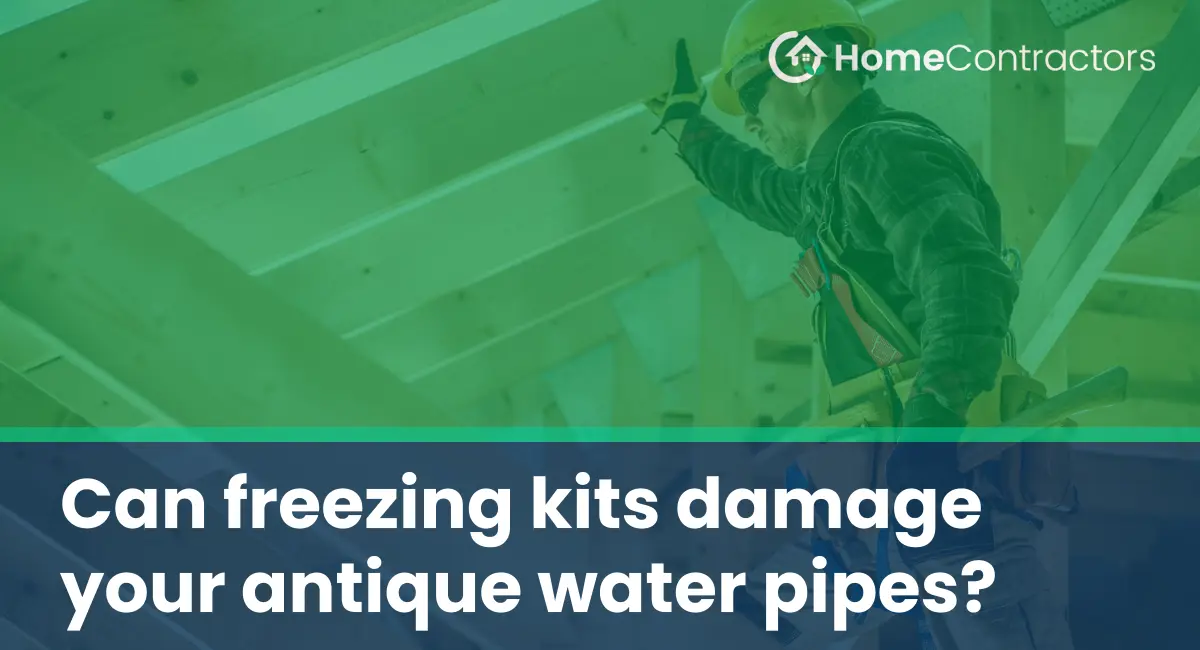Antique water pipes are not only valuable but also an important part of historical and architectural significance. Preserving these pipes, especially when it comes to preventing damage caused by freezing temperatures, is vital. In recent years, freezing kits have become a popular option for homeowners to address frozen pipe issues. However, it is crucial to consider their impact on antique water pipes. This article will explore whether freezing kits can potentially damage antique water pipes and highlight alternative methods for preventing freezing water damage.
Understanding Antique Water Pipes:
Antique water pipes, often made of materials like copper, lead, or galvanized steel, were commonly used in old homes. These pipes may have unique characteristics and are more delicate than modern plumbing systems due to their age. Proper care and maintenance are essential to prevent any potential damage.
Potential Risks with Freezing Kits:
- Pressure Build-up: Freezing kits work by inserting a plug into the pipe and pumping it with air or carbon dioxide to stop water flow. However, in the case of antique pipes, any pressure build-up caused by freezing kits can potentially lead to pipe rupture or damage.
- Brittle Pipes: Antique pipes may have become more brittle over time, making them susceptible to cracking or breaking. The application of freezing kits might exacerbate this issue, leading to irreversible damage.
- Corrosion and Leaks: Freezing kits can expose the pipes to extreme temperature variations, which can accelerate the corrosion process. This could eventually result in leaks or weakened pipe integrity.
Alternative Methods to Prevent Freezing:
- Insulation: One effective method to prevent freezing in antique water pipes is by insulating them. Insulating the pipes with foam or heat tape helps maintain a consistent temperature and prevents freezing. This method is particularly crucial for pipes located in uninsulated areas such as basements, crawl spaces, or attics.
- Drip Faucets: Allowing the faucets connected to antique water pipes to drip slightly during cold spells can help prevent freezing. The constant flow of water through the pipes reduces the chances of them becoming stagnant and freezing. However, this method should be used cautiously, as the constant water flow can lead to other issues such as water wastage or increased water bills.
- Trace Heating: Utilizing trace heating cables specifically designed for antique water pipes is another viable option. These cables wrap around the pipes and provide a gentle, constant heat, preventing freezing while minimizing the risk of damage that may occur from other methods.
Consulting a Professional:
When it comes to protecting vintage water pipes, seeking professional advice and assistance is highly recommended. Antique plumbing specialists or professional plumbers experienced with historical homes can evaluate the condition of your pipes and provide expert guidance on maintaining their integrity.
While freezing kits are a convenient solution for addressing frozen pipes in modern systems, they may pose a threat to antique water pipes. Given their delicate nature and potential risks associated with pressurized freezing methods, it is important to explore alternative preventive measures. Protecting antique water pipes through proper insulation, utilizing trace heating cables, or consulting a professional can help maintain the integrity of these valuable and historically significant plumbing systems. Preserving antique water pipes is not only vital for maintaining their value but also for honoring the historical significance they hold within homes and communities.
